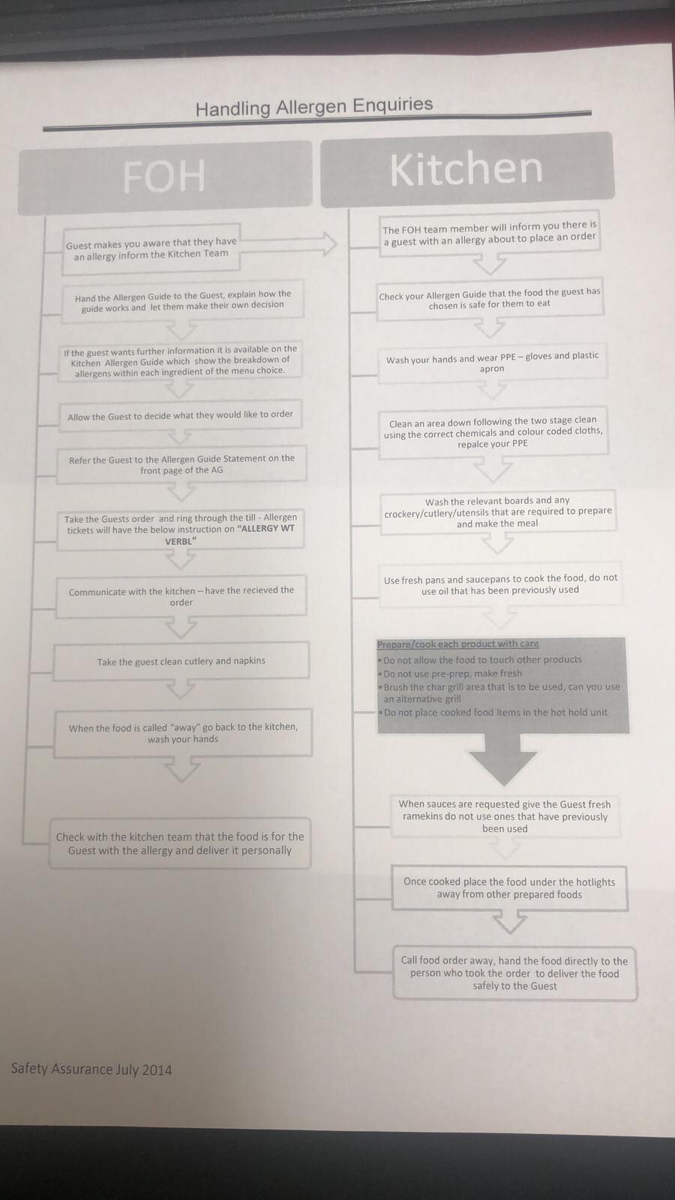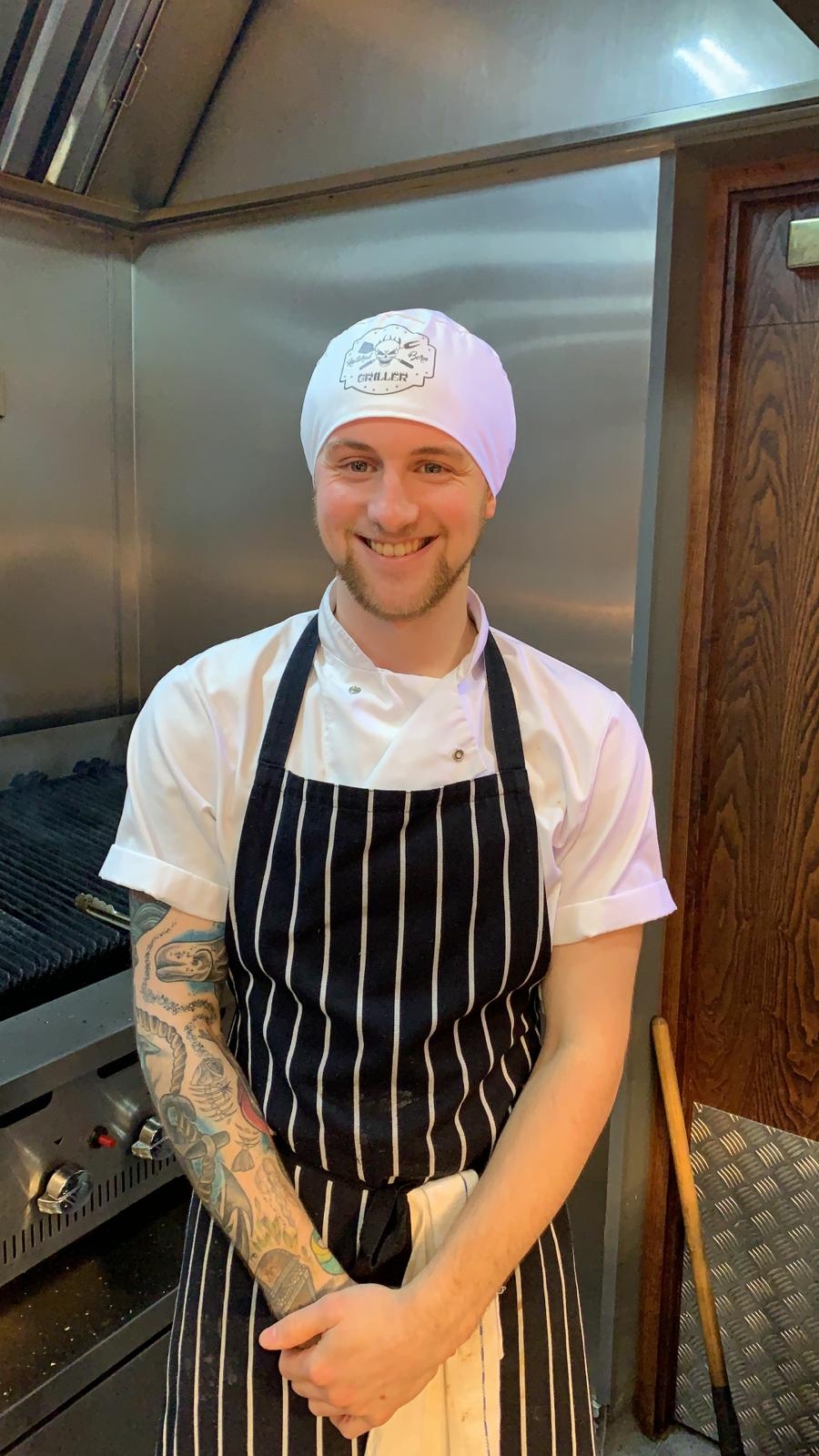Title Page
-
Conducted on
-
Prepared by
FOH service cycle
-
When advising of the intention to place a food order, the team member proactively asked whether you had any allergen or dietary requirements? - ANSWER GUIDE FOR NSF AUDITOR.............. Introduce yourself to the team/manager before conducting the allergen audit. The team who are already serving on the bar or in the restaurant are the team who should be taking the order from you. All brands will train in the need for their teams to proactively ask this question.
-
Upon being made aware of your allergy needs, the team member was able to direct you to the latest version of the allergen guide (tablet version or paper copy) - ANSWER GUIDE FOR NSF AUDITOR........ When placing the allergen order and notifying the team member of your allergen, the team member was able to provide you with a copy of the latest allergen information, Glass Onion is the application the team should share with you to allow an informed choice to be made.
-
When given the allergen guide, the team member made you aware of the food information section at the front containing the allergen notice statement - ANSWER GUIDE FOR NSF AUDITOR........ The team member must refer you to the allergen notice statement on both the paper and digital version of the guide. This food information section should be what you are greeted with for when you will click past to then review the allergens within the menu item you wish to order. This will appear on the front page of the paper version and will be the first screen displayed on the Glass onion application.
-
When entering the allergen meal through the till, the team member used the "ALLERGEN WARNING" till buttons, through food mods, to alert the kitchen team dealing with the order. ANSWER GUIDE FOR NSF AUDITOR..... Food modification buttons are required to be used. These will appear on the screens in the kitchen if the brand have these <br>or on the paper print out of the order in the kitchen.<br>NB Cocktail Orders - Food Mod buttons are not required to be used for this.
-
The team member followed the order into the kitchen and verbally communicated the allergen needs to the kitchen team - ANSWER GUIDE FOR NSF AUDITOR ..... The person taking the order is required to go and speak to the kitchen team regarding the allergen order they have just put through to ensure the kitchen have received this and understand the requirements of the order. Kitchen team do not need to check the BOH version of the allergen guide which is on the kitchen tablet, UNLESS the order being put through has had <br>some queries around it such or changes such as 'If I remove the cheese from the burger, would this be suitable for me with my dairy allergy?'
-
Communication was in place between the FOH team collecting the meal and the kitchen team to ensure the correct dish was taken to the allergen sufferer- ANSWER GUIDE FOR NSF AUDITOR..... The order can be collected from the kitchen by any team member, this does not need to be the team member that placed the order, this is because the kitchen team should have placed an allergen flag in the dish to distinguish this as being the dish <br>for the allergen sufferer. The BOH and FOH team should communicate at point of collection to ensure the correct meal is taken. If there is no stock of allergy flags, then original server is required to run the food.
BOH service cycle
-
When notified of an allergen order, kitchen team member cleaned down an area using the correct 2 stage cleaning process for preparation of the allergen meal- ANSWER GUIDE FOR NSF AUDITOR........ There does not need to be a specific allergen preparation area within the kitchen. When an allergen meal order arrives, the<br>team are required to clean down an area which is best suited using the correct 2 stage clean method. The meal will be prepared and then placed on the pass awaiting collection. The pass does not require to be cleaned down as well, purely the <br>area for the preparation of the meal.
-
Team member demonstrated good hand washing practices through the preparation of the order, including before and after cleaning down of preparation area- ANSWER GUIDE FOR NSF AUDITOR...... Hand washing should be undertaken before and after cleaning down the allergen preparation area and prior to preparing the allergen meal. Team should be washing hands, as per the correct hand washing practices, before completing the correct 2 stage cleaning of the allergen food prep area, and then post this clean to ensure contamination risks are removed. Note - Allergy training states that hands must be washed between tasks as per company policy.
-
Clean chopping boards, knives, crockery, utensils and pans were obtained and used to produce the allergen meal- ANSWER GUIDE FOR NSF AUDITOR......... Clean equipment is to be used to prepare the allergy meal. These can be already washed items which are stored and does not require everything to be freshly washed through the dishwasher.
-
Food used to prepare the allergen meal had not been at risk of contamination? (e.g. any food used from a saladette is not acceptable, prepped and covered products may be used) ANSWER GUIDE FOR NSF AUDITOR......... Food stored within a saladette cannot be used for the preparation of the allergen dish due to cross contamination risks. <br>Prepped and covered food in other service fridges/freezers are ok to be used. Food stored uncovered in other units for speed for service such as meats/fish are ok to use as long as they are not exposed to contamination risks and clean tongs are being used to handle the products.
-
The allergen meal, once complete, was stored separate to other foods on the pass or under heat lamps- ANSWER GUIDE FOR NSF AUDITOR....... Allergen meal should be stored segregated from other items when awaiting collection by the team member taking the meal out. There is no requirement for the team to complete a two stage clean of the pass. This should be kept clean through the day anyway.









